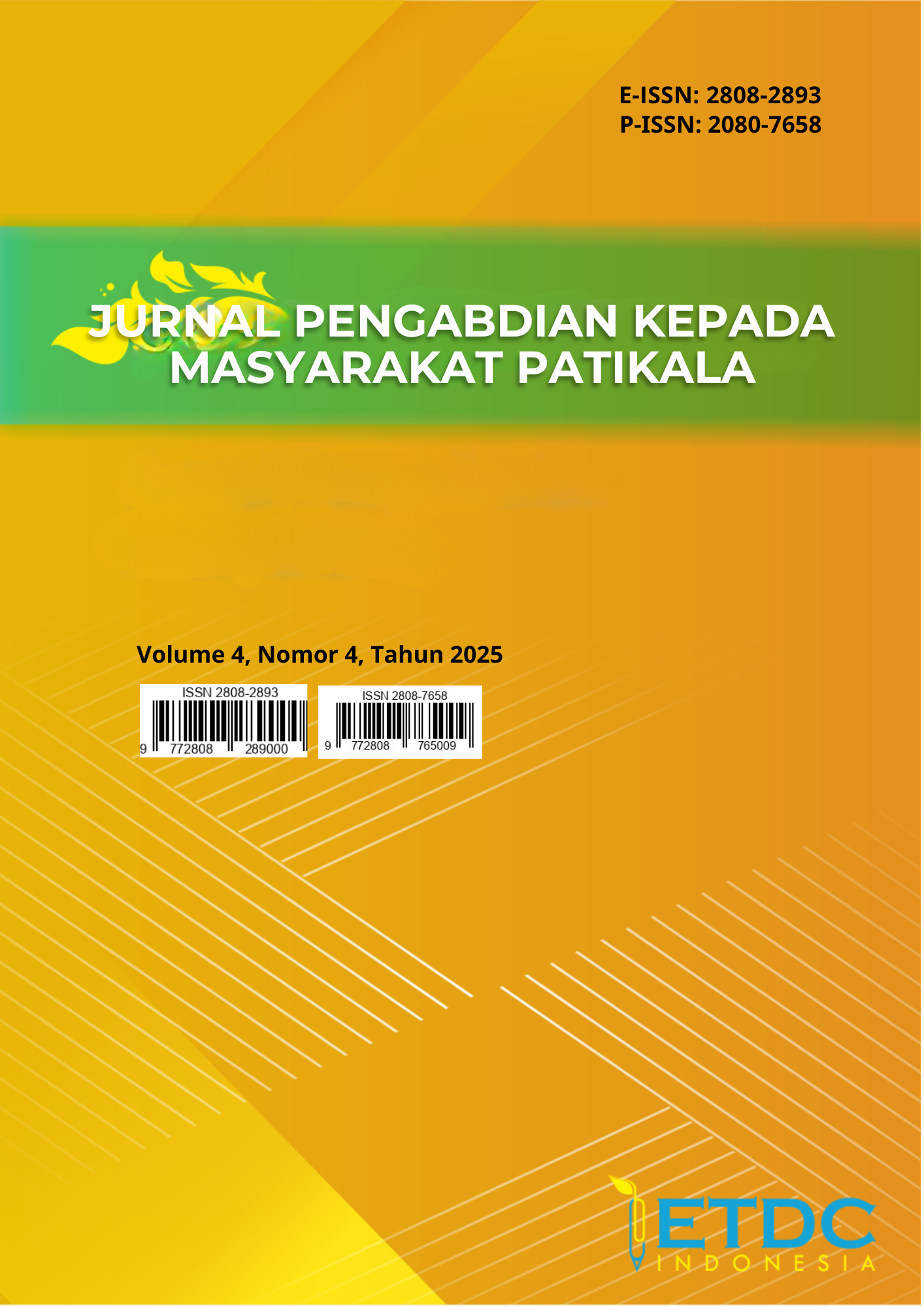PERSEPSI MASYARAKAT TERHADAP PENERAPAN SMART PLUG WIFI DALAM EFISIENSI ENERGI LAMPU JALAN DI KECAMATAN SELEBAR
Keywords:
Smart Plug Wifi, Energy Efficiency, Public Perception, Technology Acceptance Model (TAM), Smart CityAbstract
Smart Plug Wifi, an Internet of Things (IoT) innovation, has strong potential to improve energy efficiency of public street lighting. Its success, however, is contingent upon local community perceptions and acceptance. This study aims to analyze the public’s perception in Selebar Subdistrict toward the deployment of Smart Plug Wifi for streetlight energy efficiency and to identify key drivers and barriers based on the Technology Acceptance Model (TAM). A descriptive qualitative approach was employed with 30 purposively sampled respondents spanning three age groups (18–30; 31–50; >50 years) and diverse occupations. Data were collected through semi-structured interviews and thematically analyzed across TAM dimensions: perceived usefulness, perceived ease of use, and attitude toward the technology. Results indicate that 60% of respondents view Smart Plug Wifi as an effective solution for reducing electricity consumption evidenced by their appreciation of precise on–off scheduling while 30% remain neutral and 10% reject the technology due to cost concerns. Primary drivers include environmental awareness and trust in government policy, whereas major barriers are limited socialization and technical understanding. These findings underscore the necessity for more robust communication strategies and technical training to foster wider adoption. This study contributes to the Smart City and public energy efficiency literature by providing empirical insights into user acceptance of IoT devices in public spaces and offers practical policy recommendations for local governments to design inclusive smart lighting programs.
Downloads
References
Adam, A., Muharnis, A., Ariadi, D., & Lianda, J. (2020). Penerapan IoT untuk Sistem Pemantauan Lampu Penerangan Jalan Umum. ELINVO (Electronics, Informatics and Vocational Education), 5(1), 32–41. https://doi.org/10.21831/elinvo.v5i1.30600
Alrasyid, A. M., Rivai, R., Diasri, N. R., & Ulandari, D. (2025). Pengaruh teknologi Internet of Things (IoT) terhadap efisiensi energi di smart home. Journal of Information Systems Management and Digital Business, 2(3), 223–230.
Arto, B., Susilawati, R., Rahardianto, F., & Setiadi, T. (2019). Rancang bangun smart plug untuk sistem monitoring dan proteksi hubung singkat listrik. Jurnal ELTIKOM: Jurnal Teknik Elektro, Teknologi Informasi dan Komputer, 3(2), 77–84. https://ejurnal.teknokrat.ac.id/index.php/eltikom/article/view/438
Baldi, G., Megaro, A., & Carrubbo, L. (2023). Small-town citizens’ technology acceptance of smart and sustainable city development. Sustainability, 15(1), 325. https://doi.org/10.3390/su15010325
Castro, R. C. C., Lunaria, M. A. R., Magsakay, E. D. R., Leyesa, M. C., Silao, N. E. G., & Jaudian, J. G. (2020). IntelliPlugs: IoT-based smart plug for energy monitoring and control through WiFi and GSM. In 2020 IEEE 12th International Conference on Humanoid, Nanotechnology, Information Technology, Communication and Control, Environment, and Management (HNICEM) (pp. 1–6). IEEE. https://ieeexplore.ieee.org/document/9400116
Dirsehan, T., & van Zoonen, L. (2022). Smart city technologies from the perspective of technology acceptance. IET Smart Cities, 4(3), 197–210. https://doi.org/10.1049/smc2.12029
Fathoni, M., Wiliyanti, V., Lendra, L., Sulaeman, D. A., Dewi, R. D. L. P., & Rambe, A. (2024). Hubungan antara penggunaan teknologi sensor IoT dan efisiensi energi dalam bangunan cerdas. Jurnal Review Pendidikan dan Pengajaran, 7(3), 8138–8143. https://ejournal.unib.ac.id/index.php/jrpp/article/view/32145
Hidayat, R. T., Nugroho, I. A., Saputra, D. M. W., Marzuki, M. I., & Prayogi, S. (2024). Pengembangan sistem penerangan jalan pintar berbasis IoT dengan Arduino dan NodeMCU. Jurnal Algoritma, 21(2), 124–131. https://ejournal.bsi.ac.id/ejurnal/index.php/algoritma/article/view/16865
Khemakhem, S., & Krichen, L. (2024). A comprehensive survey on an IoT-based smart public street lighting system application for smart cities. Franklin Open, 8, 100142. https://doi.org/10.1016/j.franklinop.2024.100142
Laby, R. J. A., Angka, P. R., & Joewono, A. (2021). Sistem penerangan jalan umum berbasis IoT (Internet of Things). Widya Teknik, 20(2), 95–104. https://ejournal.ittelkom-pwt.ac.id/index.php/widyateknik/article/view/348
Laksana, T., Suwastika, N. A., & Al Makky, M. (2022). Technology Acceptance Model (TAM) untuk sistem smart lighting di PT. XYZ. Jurnal Nasional Teknik Elektro dan Teknologi Informasi, 11(2), 121–129. https://ejournal.undip.ac.id/index.php/jnteti/article/view/40289
Liu, D., Li, Q., & Han, S. (2022). Using extended Technology Acceptance Model to assess the adopt intention of a proposed IoT-based health management tool. Sensors, 22(16), 6092. https://doi.org/10.3390/s22166092
Muzafar, G., Wibawa, A. P., & Nabila, K. (2022). Persepsi dan dampak penerapan teknologi cerdas pada masyarakat Society 5.0 di Indonesia. Jurnal Inovasi Teknik dan Edukasi Teknologi, 2(6), 294–298. https://journal.institutpendidikan.ac.id/index.php/jitet/article/view/1060
Oh, J. (2020). IoT-based smart plug for residential energy conservation: An empirical study based on 15 months’ monitoring. Energies, 13(15), 4035. https://doi.org/10.3390/en13154035
Saputra, T., & Surapati, U. (2024). Analisis efektivitas sistem kendali otomatis PJU berbasis IoT menggunakan mikrokontroler ESP32 dengan metode regresi linier. Jurnal Indonesia: Manajemen Informatika dan Komunikasi (JIMIK), 5(3), 2582–2595. https://jimik.org/index.php/jimik/article/view/652
Tsourela, M., & Nerantzaki, D. (2020). An Internet of Things (IoT) acceptance model: Assessing consumer’s behavior toward IoT products and applications. Future Internet, 12(11), 191. https://doi.org/10.3390/fi12110191
















